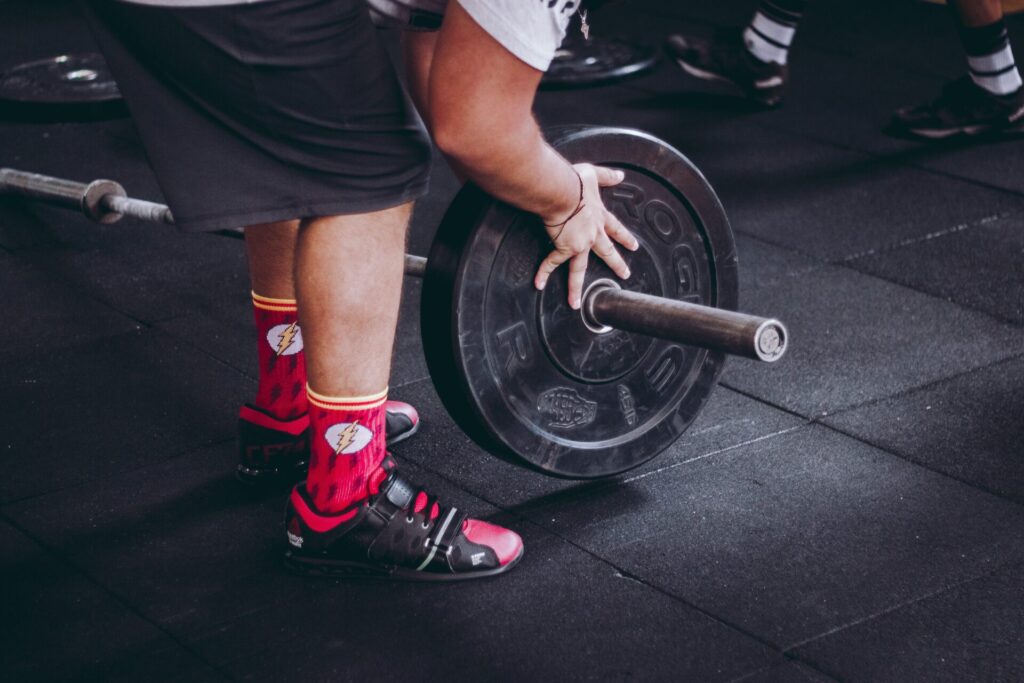Understanding Resistance Training and Its Types

Resistance training, at its core, is a method designed to help individuals develop and strengthen muscles. While many associate it with weights, it can also be effectively executed using resistance bands or even one’s own body weight.
Different Forms of Resistance Exercise
- Weightlifting: Often referred to as strength training, this involves using weight equipment like barbells, dumbbells, or kettlebells to challenge your muscles. Primarily used to increase muscle size and boost strength, it also revs up metabolism. The outcome? Enhanced weight loss and a more sculpted physique.
- Bodyweight Exercises: These encompass exercises like push-ups, pull-ups, and squats, where one’s own body weight provides the resistance. The beauty of bodyweight exercises lies in their versatility—they can be done virtually anywhere without the need for specialized equipment. They’re great for building muscle and strength and can even double as intense cardio workouts. However, they do have a limitation when it comes to muscle growth, as increasing muscle size significantly might require more resistance than what one’s body weight can provide.
- Resistance Bands: Using elastic bands of varying resistance levels, resistance band training offers a unique and adaptable workout experience. Perfect for both travel and home workouts, these bands can target the entire body or be used for specific muscle groups.
- Machine-based Resistance Training: This involves using specialized weight machines like the leg press or chest press. They are especially beneficial for beginners since they focus on isolating specific muscle groups while providing steady resistance. Additionally, because of the reduced strain on the joints, they’re an excellent choice for older individuals or those with certain physical restrictions.
In conclusion, with an array of resistance training modalities at your disposal, you have multiple paths to achieve your weight loss goals and elevate your overall health and fitness. By incorporating a mix of these techniques into your regular workout regimen, you can enjoy varied and comprehensive benefits.
Understanding How Resistance Training Augments Muscle Mass

During resistance training, which encompasses methods like bodyweight exercises, using resistance bands, and traditional weightlifting, muscles are compelled to exert more effort than they typically would. This added exertion causes minuscule damages to the muscle fibers. However, this isn’t detrimental; in fact, it’s beneficial. The muscles repair these minor injuries, which in turn strengthens and enlarges them. As muscle mass increases, so does the metabolic rate. A heightened metabolism means your body burns more calories even when you’re not exercising, leading to greater weight loss.
The Connection Between Muscle Mass and Metabolism
Muscle tissue is metabolically more active than fat tissue. For every unit of muscle, more calories are expended compared to the same unit of fat. This means that even at a resting state, a muscular body will consume more calories than a less muscular one. The logical conclusion? More muscle mass equals a faster metabolism, which subsequently translates to more calories burned and greater weight loss.
Hormones: The Unsung Heroes in Weight Loss
The endocrine system’s role in weight management cannot be overstated. For instance, resistance training stimulates the secretion of growth hormone and testosterone, both vital for muscle building and an elevated metabolism. Furthermore, the hormone insulin, integral for glucose management, is positively influenced by resistance exercise. Proper insulin regulation means our bodies are more adept at utilizing fat as an energy source, thus accelerating weight loss.
Five Key Benefits of Resistance Training for Weight Loss
- Caloric Burn: Resistance training intensifies calorie expenditure, aiding weight loss.
- Fat Reduction: Beyond mere weight loss, resistance training specifically targets fat loss, ensuring what you lose is unwanted fat and not muscle.
- Muscle Preservation: While many weight loss regimens might lead to muscle reduction, resistance training helps maintain, if not increase, muscle mass.
- Metabolic Boost: As previously discussed, resistance training amplifies metabolism, ensuring you burn more calories even at rest.
- Weight Maintenance: By increasing muscle mass and boosting metabolism, resistance training reduces the likelihood of weight rebound, helping you keep those lost pounds at bay.
Harnessing the principles of resistance training can be transformative, not just for weight loss, but for holistic health and well-being.
Unlocking the Power of Resistance Training for Fat Loss and Beyond

Shedding Fat with Resistance Training
Resistance training is a potent tool for fat loss. When engaged in resistance exercises, your body exerts more energy, resulting in an elevated calorie burn which, in turn, helps in shedding unwanted fat.
Preserving Muscle Mass during Weight Loss
Weight loss isn’t just about seeing a smaller number on the scale; it’s about what makes up that weight. While the scale might show a decrease, it could be a combination of fat and invaluable muscle mass. Muscle is the powerhouse of metabolism, driving caloric burn. By incorporating resistance training into your regimen, you ensure that the weight you lose is primarily fat, preserving (and even building) muscle to keep your metabolic engine roaring.
Boosting Metabolism with Resistance Training:
It’s a well-established fact that muscle is more metabolically active than fat. By losing weight while preserving muscle mass, you elevate your resting metabolic rate. This boost in metabolism ensures you’re burning more calories even at rest, aiding in long-term weight maintenance.
Resistance Training: The Antidote to Weight Rebound:
One common pitfall of diet-centric weight loss is the dreaded weight rebound. However, resistance training offers a solution. By sculpting a leaner, more muscular physique, you equip your body to better resist weight gain, ensuring the weight you lose stays off.
Beyond Weight Loss: Health Benefits of Resistance Training:
Resistance training isn’t just about aesthetics. The health benefits are numerous:
- Enhanced muscle strength and endurance.
- Protection for your joints against minor injuries.
- Reduction in anxiety levels.
- Boosted mood and overall well-being.
Why Resistance Training Trumps Dieting Alone:
While dieting has its merits, many prefer the holistic benefits of resistance training. Dieting can be restrictive and challenging to maintain. More so, the weight lost from dieting alone can often creep back once the diet ends. On the other hand, resistance training offers sustainable results, improved physical health, and psychological benefits.
In Conclusion
If sustainable weight loss is your goal, relying solely on dieting might not be the best approach. Instead, consider coupling it with resistance training. This powerful duo ensures not only weight loss but also improved health, strength, and well-being. We trust that you’ve found this information beneficial and wish you all the best on your fitness journey!



